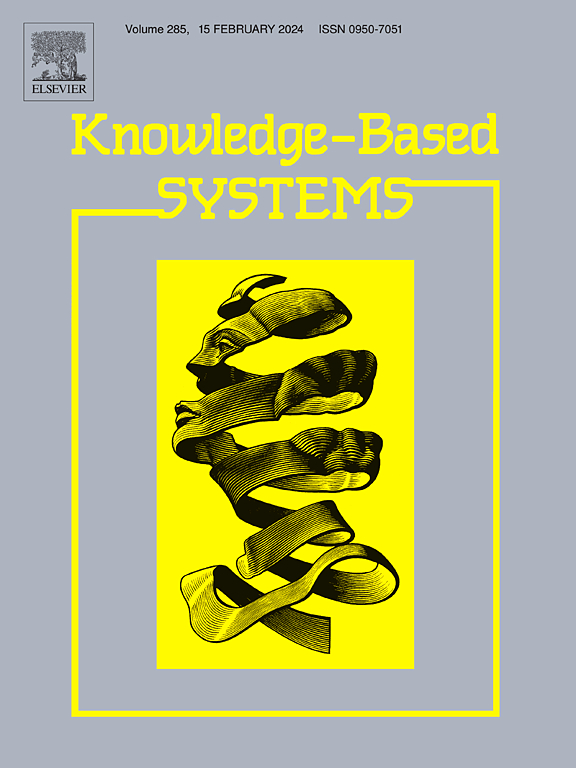通过分段时间框架聚类利用数据增强进行长期交通速度预测
IF 7.2
1区 计算机科学
Q1 COMPUTER SCIENCE, ARTIFICIAL INTELLIGENCE
引用次数: 0
摘要
在众多交通预测研究中,侧重于长期交通预测(如 24 小时预测)的研究相对较少。虽然交通速度等交通数据比较容易获得,但根据服务提供商的地理位置或可用性,要获得包含天气或事件的类似可靠且可访问的特征数据则非常困难。当考虑到全球覆盖范围时,获取这些数据就成了一个更重要的问题。为了缓解特征数据有限的问题,本文提出了一种方法,通过将数据集分类为适当的群组作为附加特征来提高数据集的质量并确保更准确的训练,从而增强现有数据。本文提出了一种长期交通预测模型,利用一种新颖的时间序列分割方法,并通过卷积神经网络(CNN)进行数据聚类和分类,以弥补交通数据和特征的不足,作为使用长短期记忆(LSTM)进行长期交通预测之前的额外预处理。该模型被称为集群增强 LSTM(CAL)。该模型与现有的机器学习模型进行了比较,并使用平均绝对百分比误差 (MAPE) 和均方根误差 (RMSE) 性能指标进行了评估。对 LSTM 和门控递归单元(GRU)进行了比较,结果表明 GRU 在大多数情况下往往优于 LSTM。不过,所提方法中表现最好的仍然是 LSTM。最终结果表明,拟议的 CAL 模型可以取得更好的结果,MAPE 和 RMSE 分别为 1.42 %-1.76 % 和 0.25-0.41 %。本文章由计算机程序翻译,如有差异,请以英文原文为准。
Long-term traffic speed prediction utilizing data augmentation via segmented time frame clustering
Among many traffic forecasting studies, comparatively fewer studies focus on long-term traffic prediction, such as 24-hour prediction. While traffic data such as traffic speed are easier to obtain, obtaining similarly reliable and accessible feature data with the inclusion of weather or events would be difficult depending on the location or availability of the service providers. Getting these data becomes a more significant issue when considering global coverage. To mitigate the issue of limited feature data, a method to augment already existing data by improving the dataset's quality and ensuring more accurate training via sorting the dataset into appropriate clusters to be used as an additional feature is proposed. This paper proposes a long-term traffic forecasting model that utilizes a novel time-series segmentation method paired with data clustering and classification via Convolutional Neural Network (CNN) to cover the lack of traffic data and features as additional pre-processing before using Long Short-Term Memory (LSTM) for long-term traffic prediction which is not researched as much. This proposed model is called Cluster Augmented LSTM (CAL). The proposed model is compared with existing machine learning models and evaluated using Mean Absolute Percentage Error (MAPE) and Root-Mean-Squared-Error (RMSE) performance metrics. A comparison between LSTM and Gated Recurrent Units (GRU) was conducted, showing that GRU tends to outperform LSTM in most cases. However, the best-performing result for the proposed method still utilizes LSTM. The final results show that the proposed CAL model could achieve better results by 1.42 %-1.76 % and 0.25–0.41 for MAPE and RMSE, respectively.
求助全文
通过发布文献求助,成功后即可免费获取论文全文。
去求助
来源期刊

Knowledge-Based Systems
工程技术-计算机:人工智能
CiteScore
14.80
自引率
12.50%
发文量
1245
审稿时长
7.8 months
期刊介绍:
Knowledge-Based Systems, an international and interdisciplinary journal in artificial intelligence, publishes original, innovative, and creative research results in the field. It focuses on knowledge-based and other artificial intelligence techniques-based systems. The journal aims to support human prediction and decision-making through data science and computation techniques, provide a balanced coverage of theory and practical study, and encourage the development and implementation of knowledge-based intelligence models, methods, systems, and software tools. Applications in business, government, education, engineering, and healthcare are emphasized.
 求助内容:
求助内容: 应助结果提醒方式:
应助结果提醒方式:


